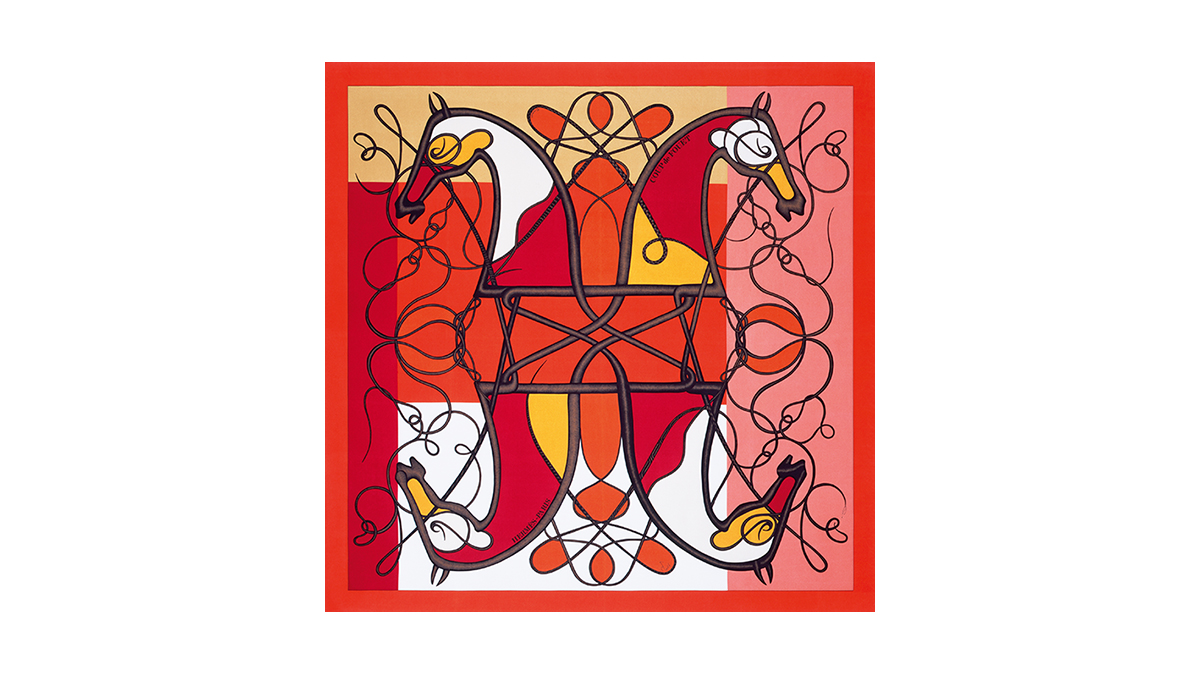Square dance: The story behind the Hermès scarf
Fashion fades, but scarves are eternal: Olivier Saillard celebrates the versatility and sheer elegance of the simple silk carré

It is the item of clothing with the simplest possible form, and without doubt the most archaic. A piece of silk cut into a square (carré), whose function remains undefined. For as long as we can remember, it has been one of those unnecessary accessories that becomes more classic than fashionable, refuting all the facts of silhouettes that change from decade to decade.
Since it first entered the house of Hermès, the carré has not moved, except in the folds of the arms of the beauties who wear it. Its raison d’être is its arithmetical formula, that of one side equal to the other, which sometimes mutates into a mane of fabric on the head, sometimes into a silky choker around the neck, sometimes into an improvised stole, sometimes into long fingers that follow the wind.
Fashion renders necessary those accessories that extend a woman’s femininity through a movement of the hand. The handkerchiefs of the 19th century, which women kept with them at all times lest they needed to wipe away a tender tear, were followed in the 20th century by the carré, which smashed into brilliant pieces the silent restraint of the previous century.
The Week
Escape your echo chamber. Get the facts behind the news, plus analysis from multiple perspectives.

Sign up for The Week's Free Newsletters
From our morning news briefing to a weekly Good News Newsletter, get the best of The Week delivered directly to your inbox.
From our morning news briefing to a weekly Good News Newsletter, get the best of The Week delivered directly to your inbox.
Since 1937, the date when the original designs were created at the request of Robert Dumas [the head of Hermès at the time], the carré has been the breath of air that suffocating throats were waiting for, a seedbed of colours on the skin. The carré streaks across the body like a high-level sportsman, but reposes like an elegant woman. For she who wears it, the carré can single-handedly administer the love potion of an epoch. It has been knotted under the chin in the Fifties, at the back of the neck in the Sixties, around the waist in the Eighties, when it was not tied to the handle of a bag, end to end; the carré has even inspired shirts, garments that when assembled form a silky layer next to the skin.
Classic or casual, according to the taste of the moment, it is a visiting card of designs that does not really bear a message other than to embellish with a murmur. More than a signature, it adds a flourish to the top of a bust, the end of a hand, is forgotten on an armrest but always brought back home.
The carré is more than a piece of clothing; it is a gesture that one carries with one.
Olivier Saillard is a leading fashion authority. Prior to his current role as director of the Musée Galliera, Paris’s museum of fashion, he was a curator at the Louvre’s Musée des Arts Décoratifs.
A free daily email with the biggest news stories of the day – and the best features from TheWeek.com
-
 Farage’s £9m windfall: will it smooth his path to power?
Farage’s £9m windfall: will it smooth his path to power?In Depth The record donation has come amidst rumours of collaboration with the Conservatives and allegations of racism in Farage's school days
-
 The issue dividing Israel: ultra-Orthodox draft dodgers
The issue dividing Israel: ultra-Orthodox draft dodgersIn the Spotlight A new bill has solidified the community’s ‘draft evasion’ stance, with this issue becoming the country’s ‘greatest internal security threat’
-
 Codeword: December 13, 2025
Codeword: December 13, 2025The daily codeword puzzle from The Week